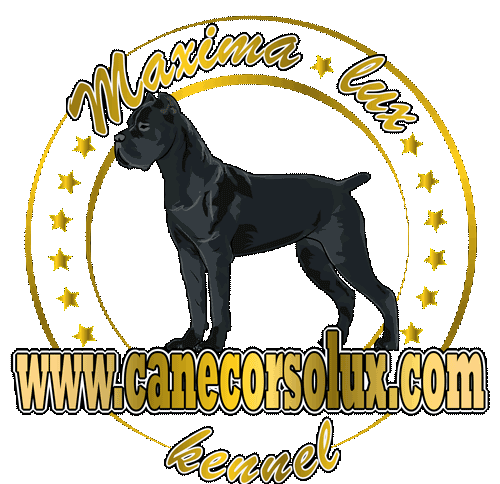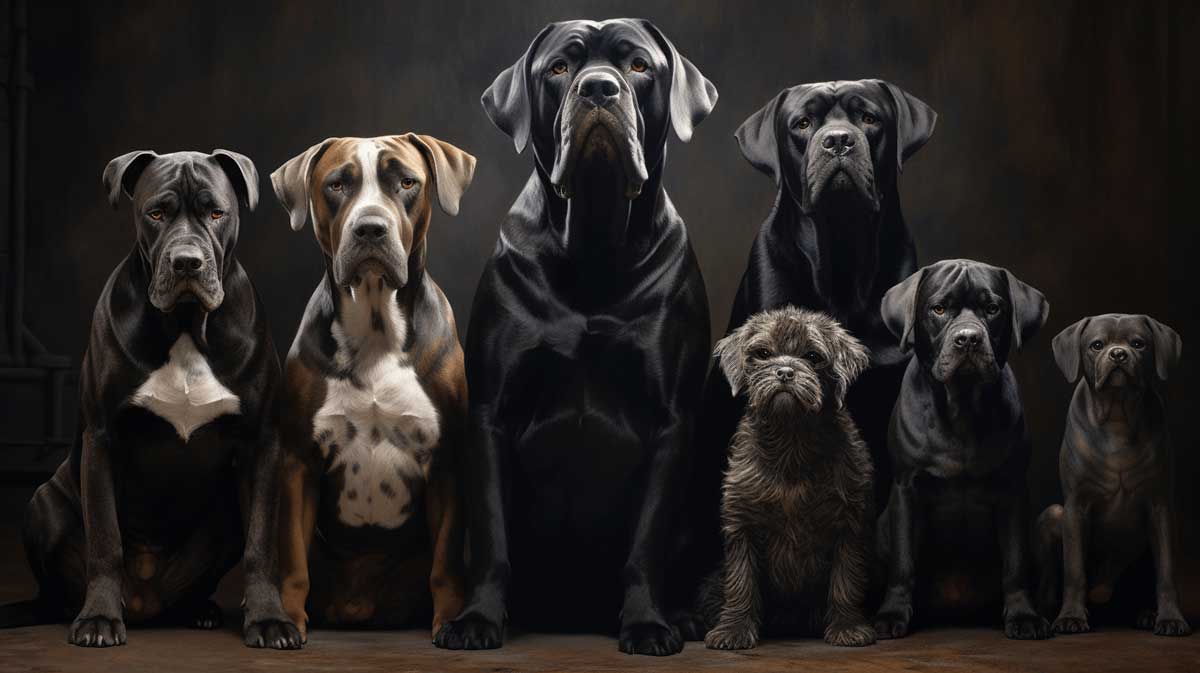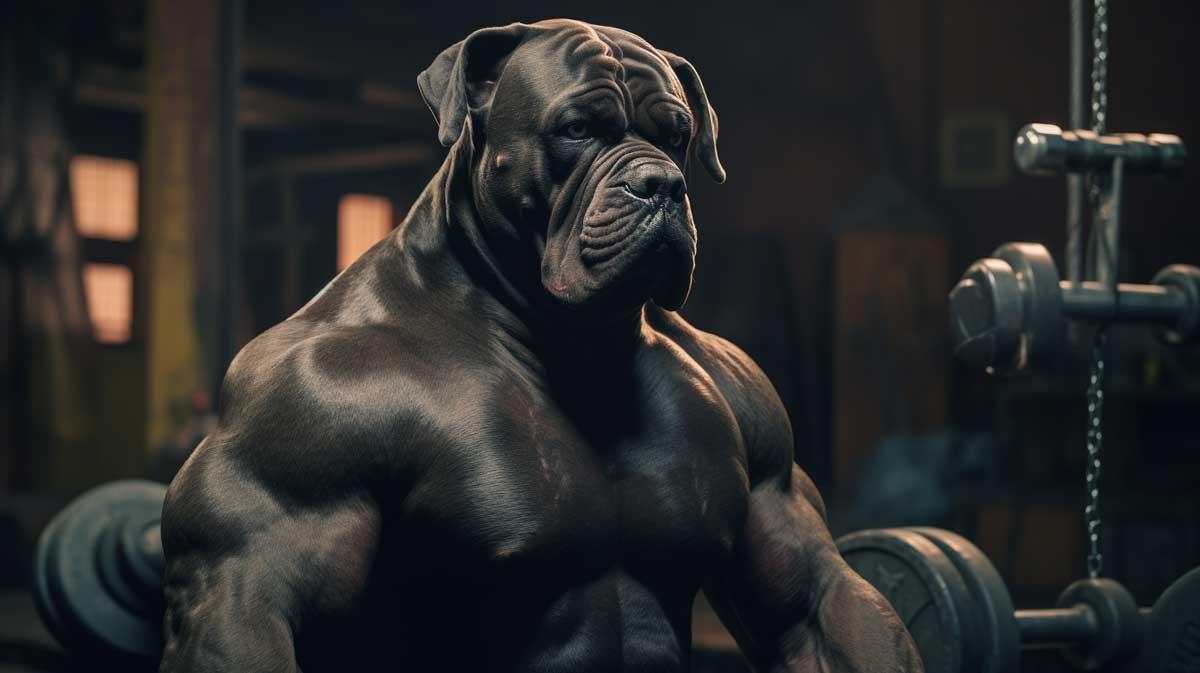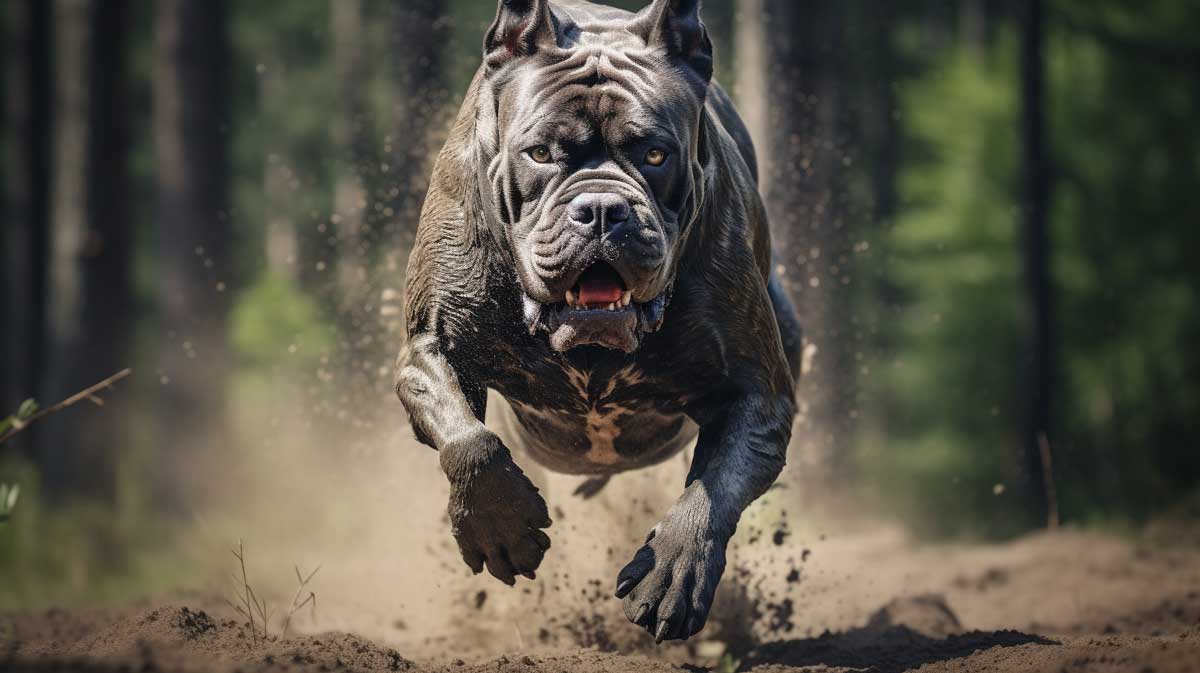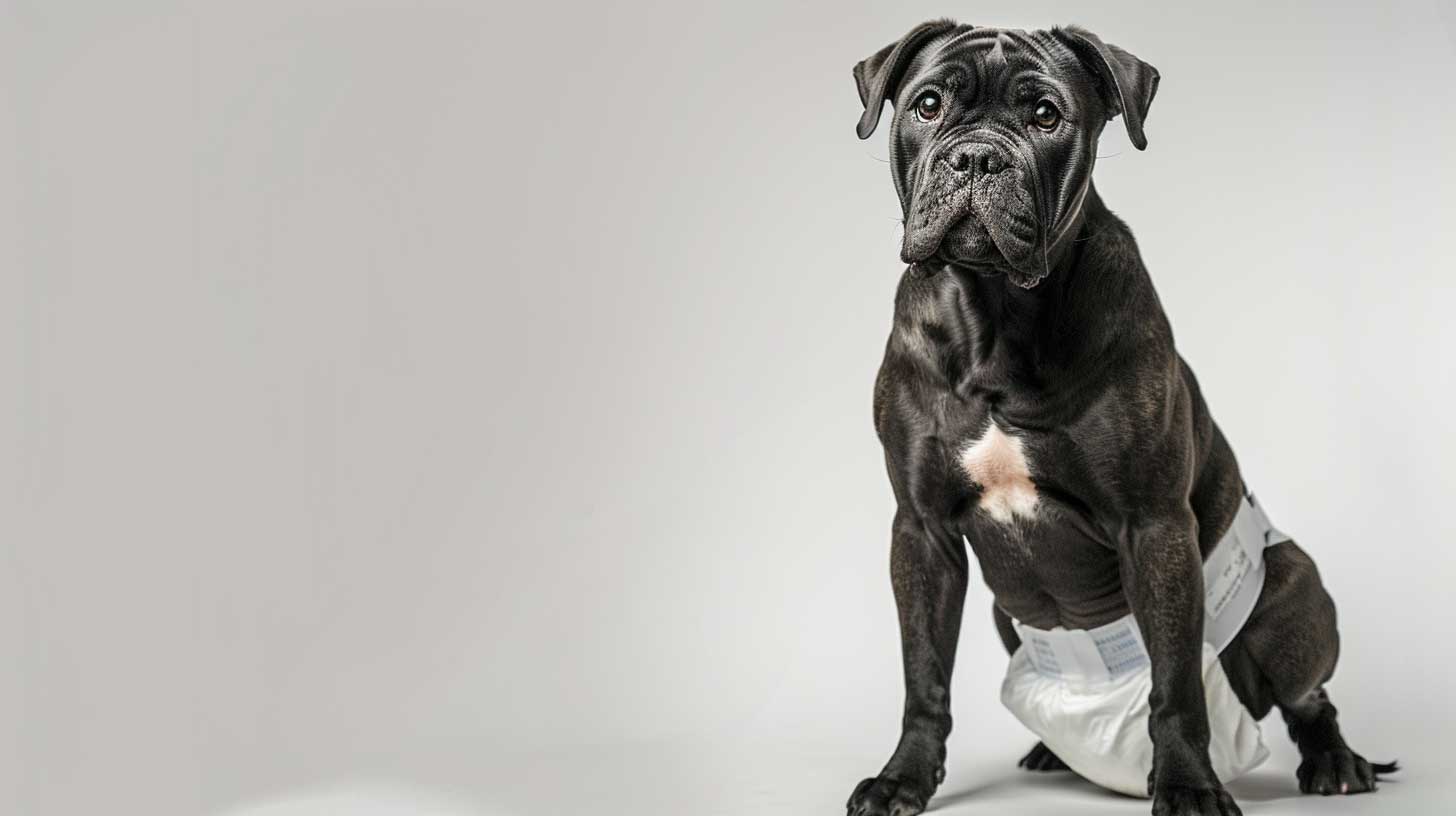This is a classic Italian bulldogge/mastiff, descended from the old Roman Molossers, closely associated with the southern Puglia region and related to the Neapolitan, as well as the Sicilian breeds, with which it has traditionally been classified together under the Cane da Presa name…
It also has ties with the Alano Espanol and other European working breeds of the Alaunt type. Contrary to popular belief, this is not a re-creation of the Sicilian Branchiero, nor there ever was a “Cane di Macellaio” breed.
While not quite the same breed as the original Cane Guzzo of Sicily, today’s Cane Corso (pronounced Kah-Neh Kor-Soh) is a revived continuation of the old Cane Corso, period. The still-alive Branchiero Siciliano, along with a few more Sicilian breeds is related to the Cane Corso, and they all at one time or another went under the name of Cane di Macellaio, referring to their butchershop guarding job, not a specific breed. It should also be clarified that this is NOT a Corsican breed, as some ill-informed breeders and fanciers seem to think. Perpetuating this myth only creates even more confusion, which is the last thing this magnificent Molosser needs.
Unlike some of its Sicilian cousins, the Cane Corso was originally a hunting dog, a very fast large game tracker. It was only later that it became a cattle drover and a personal guardian. And eventually it found its way into the arenas as a baiter of bears, bulls and giant cats of Africa and Asia. It didn’t take long before it became a popular fighting dog, which is what it unfortunately stayed mostly remembered as in the West, even though it’s neither bred for it nor is that its original role.
The present-day Cane Corso exists in decent numbers, but because of reckless breeding and crosses with some bull-breeds, it is getting difficult to find a true representative of the breed. Although the initial efforts were focused on preserving the original farm dogs from Puglia and surrounding areas, a fair amount of English Bullmastiff and German Boxer blood was introduced in the early years of the revival programme to help expand the Cane Corso gene pool, but the use of these breeds unfortunately resulted in the appearance of certain physical traits which weren’t associated with the Cane Corso Italiano in the past, creating some controversy concerning the proper breed type.
Because not all stock came from the same places and not every person involved in the revival programme shared the same vision, the breed was led in different directions. While Vito Indiveri and Paolo Breber are credited as the leading forces in the salvation of the breed, the influence of other, lesser known participants shouldn’t be ignored, even if they’ve been less than honest about their breeding practices, which oftentimes relied on the employment of somewhat questionable outcrosses. The dogs found in the rural areas were one thing, but examples found closer to the cities and oftentimes from fighting bloodlines were something altogether different. Regardless of the romantic interpretations of the Cane Corso history, it should be clear to everyone that the modern incarnation of the breed was established on the foundation stock that numbered both the old and isolated strains of true farm workers, as well as the examples whose origin is neither ancient nor pure.
Sadly, a great number of modern Italian examples can be seen with uncharacteristic head shapes and overly short muzzles, thanks to the widely accepted, yet strongly denied, excessive use of Boxer blood in Corso breedings in recent years. However, there is a number of Corso fanciers in Italy who are breeding for a specific type, which they believe to be pure and historically correct, commonly referred to as the Cane Corso Ortognato. The unrelated breed known as the American Corso Dog is a modern creation, developed in the United States by crossing the Neapolitan Mastiff with the Rottweiler and various Bandogges. Even though this American breed is oftentimes presented as the Cane Corso, it has no real ties with the Italian breed.
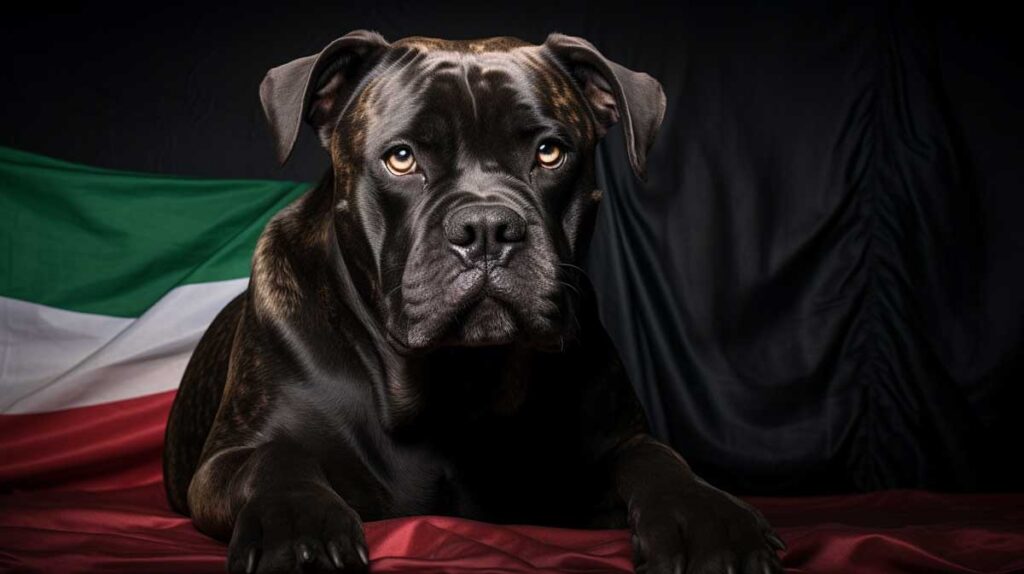
Most American and Canadian fanciers of the Cane Corso Mastiff regularly import dogs from Italy and are committed to the preservation and promotion of the true type and purity of the breed, but some western lines have been enriched with the blood of other working dogs, namely the Presa Canario, American Pit Bull Terrier, Neapolitan Mastiff, Bullmastiff, Rottweiler, Boxer and the aforementioned American Corso Dog, resulting in a great variety within the breed in the United States, bluring the lines between the American-bred Cane Corso Italiano and the American Corso Dog breeds even more. The Canadian Cane Corso is currently known as the Corso Pugliese, but unlike the American Corso Dog, this isn’t a designer breed at all, but a specific Puglia type of the Cane Corso Mastiff, with the Ortognato stock directly descended from Italy. The Corso Pugliese name is in place to easier distinguish Canadian dogs from the official Cane Corso Italiano, but also from the American Corso .
It should also be noted that not every light mastiff that resembles a Corso really is a true Cane Corso Italiano as recognized internationally, because this is not the only Italian breed of this type. Even in Italy, there is a number of unpure strains to be encountered, but there are also a few indigenous separate breeds which share the early ancestry of the Cane Corso. The above-mentioned Cane da Presa population of Italy also consists of other breeds, such as the Dogo Sardo, Cane da Branco, Bucciriscu Calabrese, Sicilian Vucciriscu and others, including certain strains of old Maltese Mastiffs believed to had survived in southern Sicily through assimilation into the indigenous Cane Guzzo population.
So, even if a dog is imported from Italy, it doesn’t necessarily mean that it is a real Cane Corso Italiano, or at least not the recognized variety. Matings between the other types and the modern Cane Corso were common ever since the 1970’s, almost exclusively at the expense of those other breeds, most of which are on their way to extinction. A number of fanciers don’t differentiate between these breeds, claiming that they are simply regional varieties of the Cane Corso, which is certainly not completely true. However, some enthusiasts believe that using indigenous varieties of the Cane da Presa Italiano population as outcrosses for the Cane Corso genepool is much better than relying on Boxer or Bullmastiff blood. Apart from the varieties already listed, there is also a moderately popular working breed known as the Mezzocorso, which was developed by crossing the Cane Corso with the Abruzzese Mastiff and although it is a very different dog which can’t really be confused with the Cane Corso Italiano in any way, this fact doesn’t prevent some people to falsely report the Cane della Murgia as its subtype.
If bred properly, the Italian Cane Corso Mastiff is of sound temperament, easily trained and a breed which makes an excellent family dog. Very affectionate towards children, it will gladly give up its life to protect them. This breed is completely devoted to only one master and very loving of its human family, but is naturally aloof with strangers. Although not as dominant as the American variant, the Cane Corso Italiano is still fairly dog-aggressive and at times overly protective, so it needs experienced and responsible handling. This is a very athletic and fast dog, possessing great agility and stamina, requiring a reasonable amount of exercise and more importantly, it needs a job. The body is muscular, with a straight back and long sturdy legs. This powerful Molosser has a deep and wide chest, with a strong neck and an elegant broad head and muzzle. The tail is docked and the ears are usually cropped, but unaltered specimens can be found as well.
While some modern dogs have very short and smooth Bandog-like coats, the traditional coat type for the breed is short, flat, but also hard and quite thick, as well as densely undercoated, coming in a variety of solid colours, with black, silver, blue and brindle being the most appreciated and currently favoured over the traditional fawn, chestnut, red and brown shades. White markings can still be encountered today, mostly on the chest and feet, but aren’t preferred, even though dogs with white markings on the head and body existed in the past, not to mention that piebald and even uniform white examples were also quite common before the standardization of the breed. Although black-n-tan dogs do exist, as they have for a long time, they’re not accepted by the Standard, as they’re seen as a sign of recent Rottweiler influence, thanks to the American Corso controversy.
With present-day Corsi being overall larger than their ancestors, the average height proposed for the breed should be around 26 inches, but there are even taller dogs to be found today.
